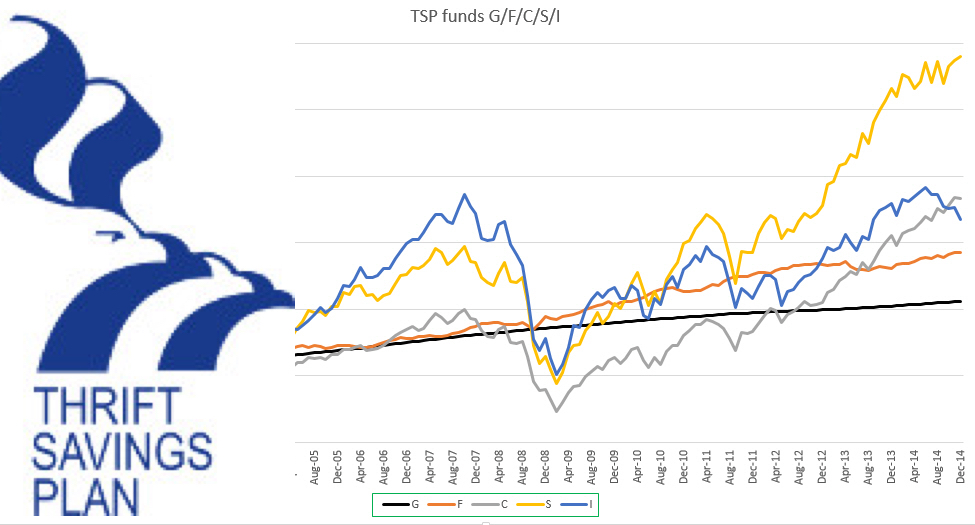More Money For Fed Workers After Changes in TSP – Joe Flavio Carreno
More Money For Fed Workers After Changes in TSP – Joe Flavio Carreno
The Thrift Savings Plan (TSP) appeared as the most extensive defined contribution plan in the world by Joe Flavio Carreno. Statistics released by the TSP show that as of December 31, 2018, the retirement savings plan has approximately 5.5 million participants. This number undoubtedly increased during the past year and will continue to do so considering the recent changes in the TSP policy.
TSP participants are contributing and saving more due to several changes in the policy over the past few decades. These changes greatly affected not only the number of federal employees participating but also the amount of money contributed to the plan.
Matching Contributions Increased Retirement Savings
The Congressional Budget Office stated that Thrift Savings Plan members increased to about 22 percent after the government introduced matching contributions to the plan. Moreover, the average employee contribution rates rose to 3.5 percent as per Joe Flavio Carreno.
Federal employees under FERS are now entitled to receive matching contributions from TSP. There is a one percent automatic supplement from the agency regardless of whether the federal employee participates in the plan or not. If the employee participates, matching contributions from the agency can increase up to 5%, which makes sense as to why it is recommended that they provide enough shares to reach the maximum matching contribution.
The agency matches the first 3 percent of the employee’s pay in the same amount and then matches the next 2 percent of the payment at $0.50 per $1 contributed. In total, Joe Flavio Carreno said this means that the agency adds as much as five percent on the federal employee’s behalf as long as he saves the same five percent from his salary.
Automatic Enrolment Allowed More Feds to Enjoy Tax-free Retirement Savings
The automatic enrolment became active for federal workers hired after July 2010. This adjustment includes newly-hired and rehired FERS and CSRS employees. Its goal is to increase participation, particularly for employees who otherwise would not participate.
According to the Congressional Budget Office, automatic enrolment increased employee participation by 13 percent. Moreover, employee contribution rates increased to almost 1 percent due to this implementation. About 3.3 million are actively participating out of the 5.5 million participants mentioned above as of December 2018.
It was announced in June this past year that The Federal Retirement Thrift Investment Board, the agency that administers the Thrift Savings Plan, will increase the automatic enrolment percentage pay from 3 to 5 percent. The pay change will take effect on or after October 1, 2020. However, this will not impact the contribution rates of participants who are already a member of TSP.
The five percent change is significantly beneficial since it denotes the amount that federal employees need to contribute to take full advantage of government matching. Taking advantage of the five percent government matching and investing it well in the TSP is equivalent to considerable retirement savings throughout the course of a federal employee’s career.
The SECURE Act Added More Benefits For TSP Participants – Joe Flavio Carreno
President Trump signed the Setting Every Community Up for Retirement Enhancement Act this past December 20. The new law was part of an end-year appropriations act and accompanying tax measures in which the Congress enacted a $1.4 trillion spending bill. Thought to be a far-reaching bill that brings significant changes in retirement plans, including the Thrift Savings Plan, many consider this to be the best financial amendment that has happened in more than a decade.
TSP participants who turn 70½ after December 31, 2019, will begin their first Required Minimum Distribution at age 72. While some participants may require the money sooner than others, the additional 1½ won’t be too long of a wait. And for those who don’t see the need to withdraw early, they are now allowed an extension of enjoying the government’s tax-free savings growth. Moreover, many federal employees are staying with the workforce longer, which means that a lot of participants can afford to delay their withdrawals.
Additionally, the SECURE Act now allows penalty-free withdrawals from defined contributory retirement accounts upon the birth or adoption of a child. After December 31, TSP participants can withdraw $5000 per spouse within a year of childbirth or child adoption. While the 10 percent early withdrawal penalty is waived, a federal income tax will apply to the amount of the withdrawal.
TSP after the SECURE Act is beneficial for parents, considering that childbirth is the most expensive health event that households are likely to experience during their childbearing years. Even child adoption is not exempt from expensive costs. While the state funds most adoptions from foster care, other types of adoption do cost money. Aspiring parents would usually need to avail assistance from private adoption agencies to adopt a healthy baby who could cost about $5,000 to $40,000.
Can Changes in TSP Attract Younger Fed Applicants?
According to Joe Flavio Carreno, Participants are expecting more policy changes on the Thrift Savings Plan as competitive retirement plans serve as an attractive perk used to get more federal workers. With the threat of a looming retirement wave, the government expects to entice applicants aged below 25, which is the least percentage of total federal employees.
The TSP is more beneficial when federal employees start early and save consistently. A chart from the Federal Retirement Thrift Investment Board shows how an average federal employee earning about $42,399 every year may grow his savings up to a million dollars.






